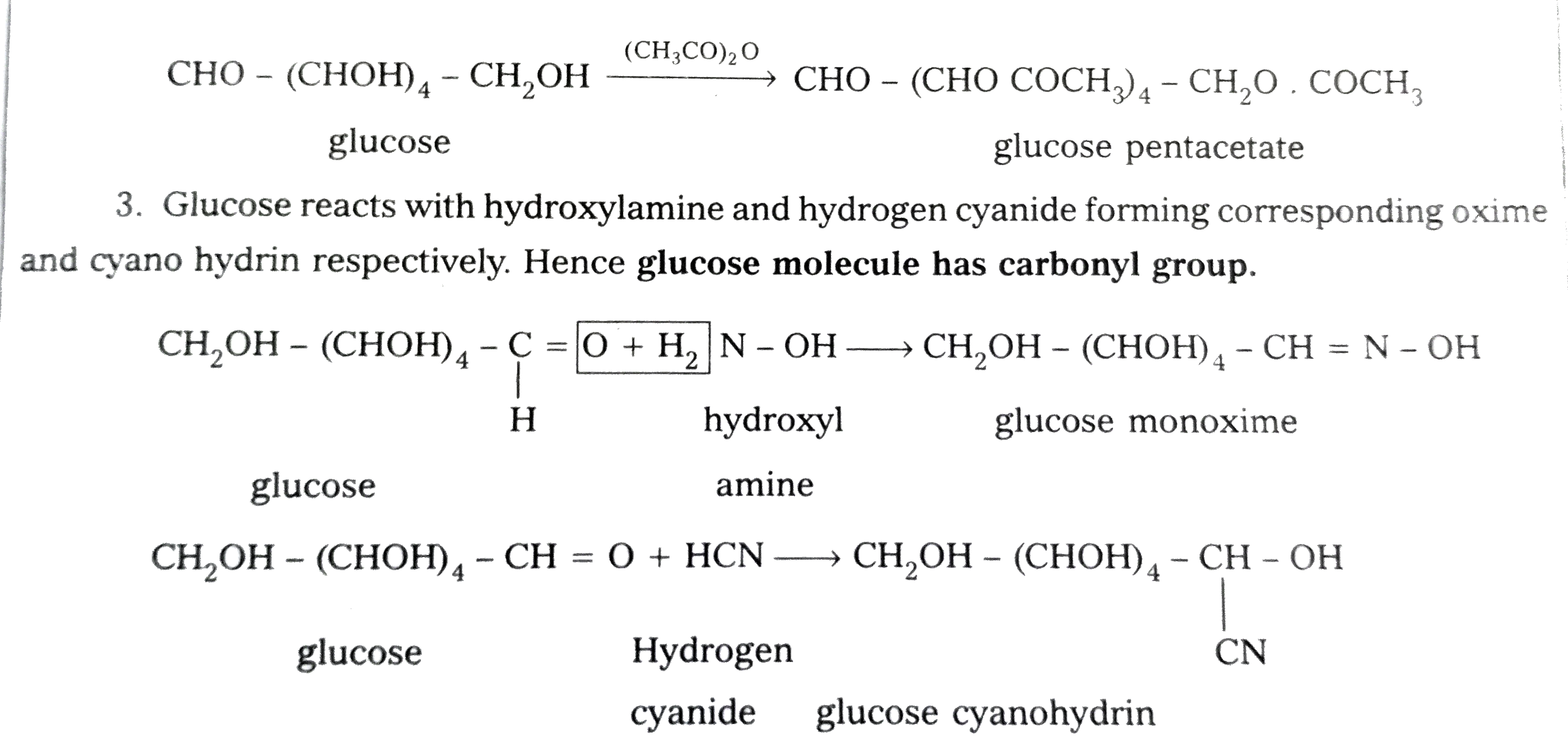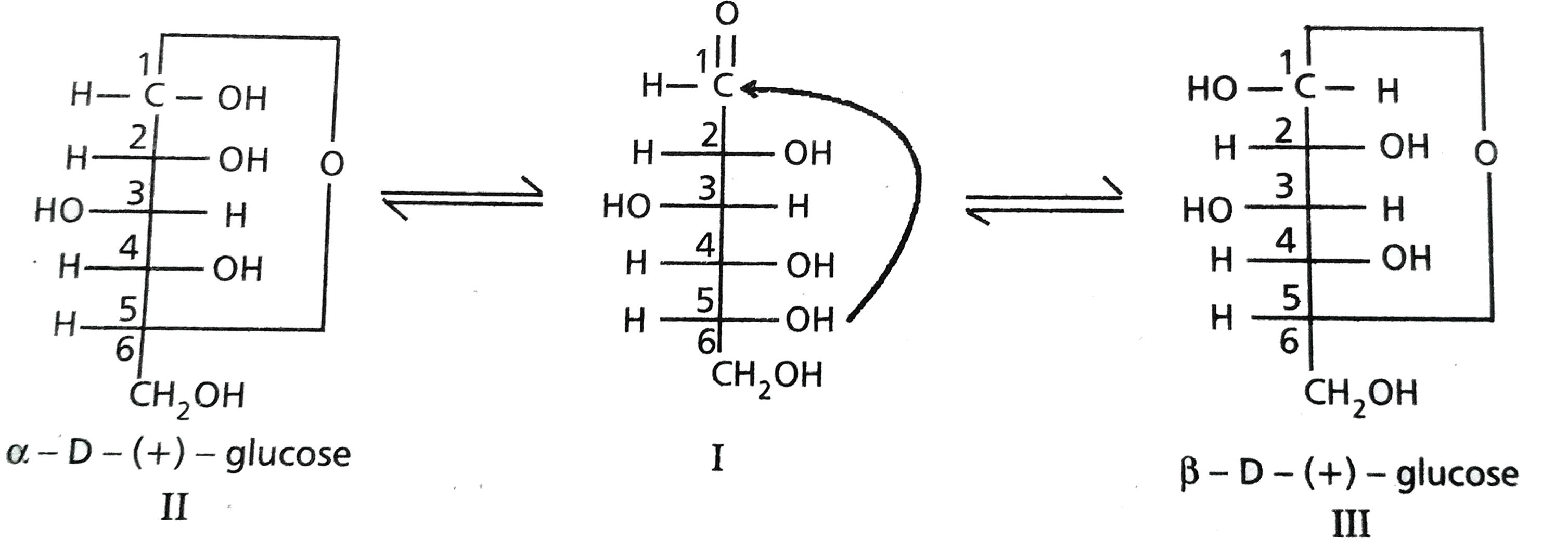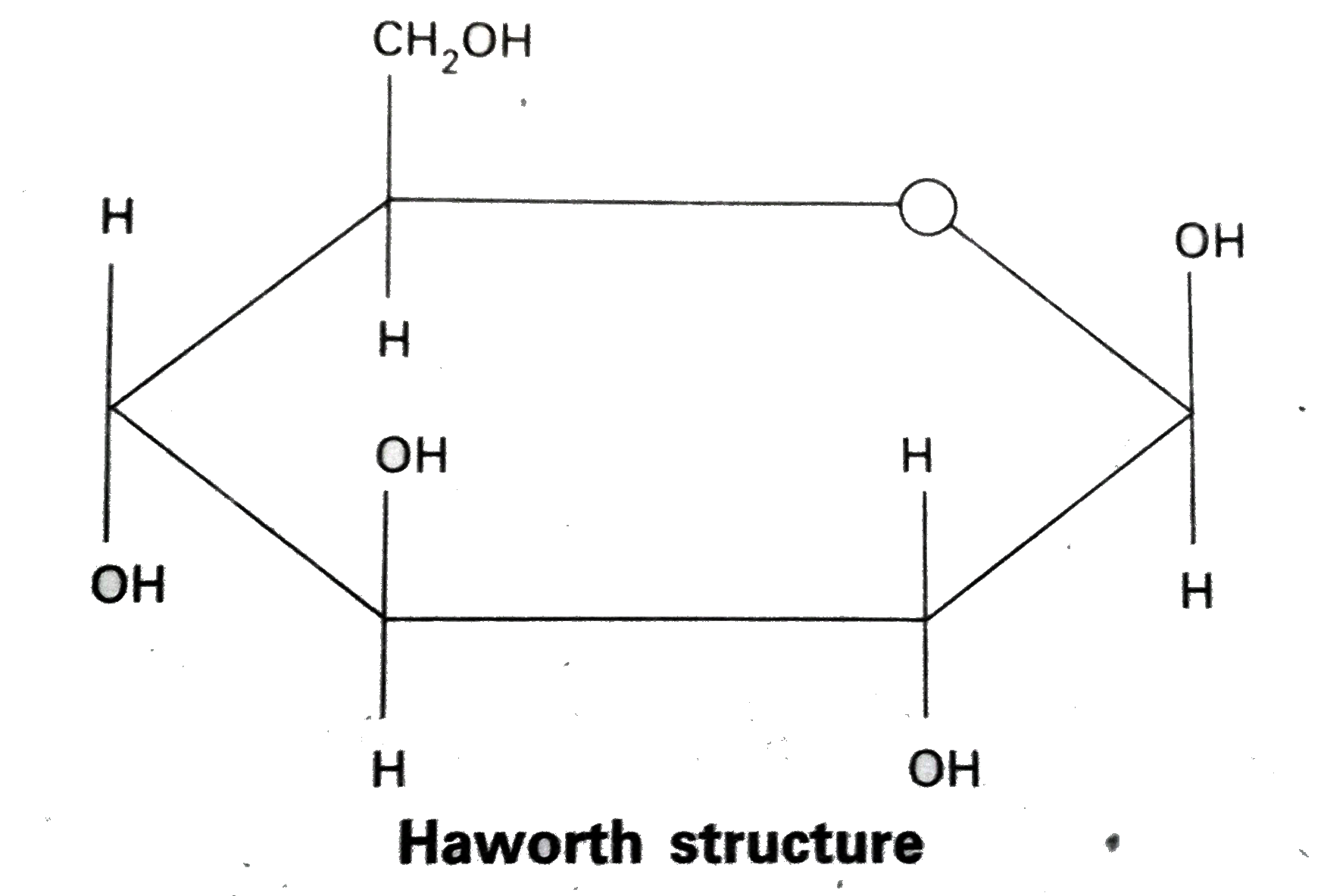Discuss the structure of glucose on the basis of its chemical properties. Solution in Telugu
1. The molecular formula of glucose is found to be C6H12O6 . It can be written as CHO−(CHOH)4−CH2OH
2. Acylation of glucose with acetic anydride gives glucose pentacetate. Hence glucose molucule has five - OH groups
CHO−(CHOH)4−CH2OHglucose(CH3CO)2O−−−−−−−→(CHO)−(CHOCOCH3)4−CH2O.COCH3glucose pentacetate
3. Glucose reacts with hydroxylamine and hydrogen cyanide forming corresponding oxime and cyno hydrin respectively . Hence glucose molecule has carbonyl group.

4. Glucose on oxidation with tollen's reagent and fehling's solution gives gluconic acid. Hence carbonyl group present in glucose is aldehydic group.
CH2−OH−(CHOH)4−CHOglucose(O)−−−−−−−−−−→Tollen's reagent(CH2OH)−(CHOH)4−COOHgluconic acid
5. Glucose on oxidation with nitric acid gives glucaric (saccharic) acid. This suggests that glucose molecule has primary alcoholic group (−CH2OH).
CH2OH−(CHOH)4−CHOglucose(O)−−−−−→NHO3COOH−(CHOH)4−COOHglucaric acid
6. On reduction with HI, glucose gives n - hexane.
CH2−OH−(CHOH)4−CHOglucoseHI−−−−−→(H)CH3−(CH2)4−CH3n-hexane
This reaction suggest that all six carbon in glucose are linearly linked .
7. Open chain structure of glucose:
Based on above observations, glucose is given the open chain structure.

Objections against open chain structure of glucose : Open chain structure of glucose could not explain
i) Why glucose does not respond to schiff's test.
ii) why is does not react with NaHSO3 and NH3
ii) Why there is mutarotation.
Mutarotation :
Change in specific rotation of a compound from certain value to fixed value is known as Mutarotation.
The specific rotation of α - glucose is + 110∘ and that of β - form is + 19.7∘ . If each of them is saparately dissolved in water and allowed to stand, their specific rotation gradually change and each to a specific constant value + 52.5∘
9. Cyclic structure of glucose :

These two structures have difference in configuration at C1 only and are called Anomers.
Cyclic structure of glucose explains all the properties of glucose .
10. Pyranose structure of glucose :

Topper's Solved these Questions
- BOOK - VIKRAM PUBLICATION ( ANDHRA PUBLICATION)CHAPTER - BIOMOLECULES EXERCISE - INTEX QUESTIONS7videos
BIOMOLECULES
- BOOK - VIKRAM PUBLICATION ( ANDHRA PUBLICATION)CHAPTER - BIOMOLECULES EXERCISE - DAM SURE VSAQ18videos
BIOMOLECULES
- BOOK - VIKRAM PUBLICATION ( ANDHRA PUBLICATION)CHAPTER - BIOMOLECULES EXERCISE - DAM SURE SAQ10videos
BIOMOLECULES
- BOOK - VIKRAM PUBLICATION ( ANDHRA PUBLICATION)CHAPTER - ANDHRA PRADESH MARCH-2019EXERCISE - SECTION-C5videos
ANDHRA PRADESH MARCH-2019
- BOOK - VIKRAM PUBLICATION ( ANDHRA PUBLICATION)CHAPTER - CHEMISTRY IN EVERYDAY LIFEEXERCISE - Intex questions5videos
CHEMISTRY IN EVERYDAY LIFE
Similar Questions
Glucose or sucrose are soluble in water but cyclohexane and benzene (simple six membered ring compound are insoluble in water. Explain.
02:52View SolutionDefine carbohydrates.
02:16View SolutionExplain the denaturation of proteins.
04:32View SolutionHow is ozone prepared from oxygen ? Explain its reaction
i) C2H4 ii) KI ii) Hg iv) PbS03:43View SolutionSleeping pills are recommended by doctors to the patients suffering from sleeplessness but is not advisable to take its doses without consultation with the doctor.Why?
Consider the effect of tranquilizers or antidepressants on the nervous system.02:59View SolutionDiscuss briefly the chemical properties of H_2S .
04:25View SolutionDiscuss the classification of polymers on the basis of their structures.
05:10View SolutionDiscuss the structure and properties of a. intrinsic semiconductor
View SolutionDiscuss the chemical properties of boric acid.
04:02View SolutionDiscuss the chemical properties of borax.
02:23View SolutionDiscuss the physical and chemical properties of ammonia.
03:24View SolutionDiscuss physical properties and chemical properties of noble gases.
03:25View SolutionDiscuss chemical properties of potassium permanganate
02:22View SolutionDiscuss structure of ClF3 on the basis of hybridisation and give geometry.
03:59View SolutionDiscuss in detail the structure of glucose.
01:57View Solution

